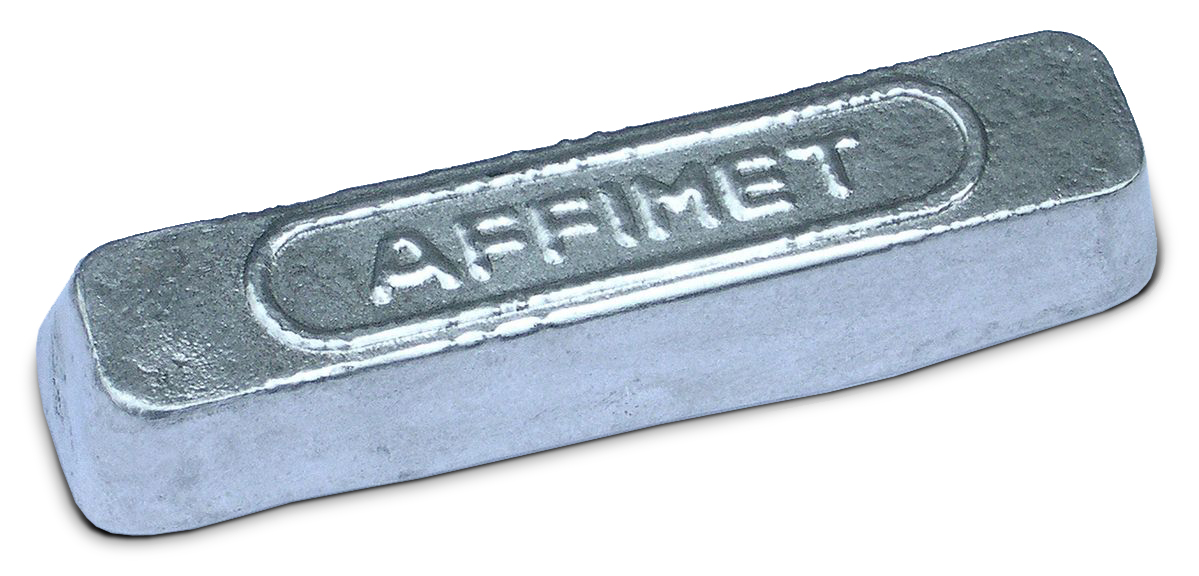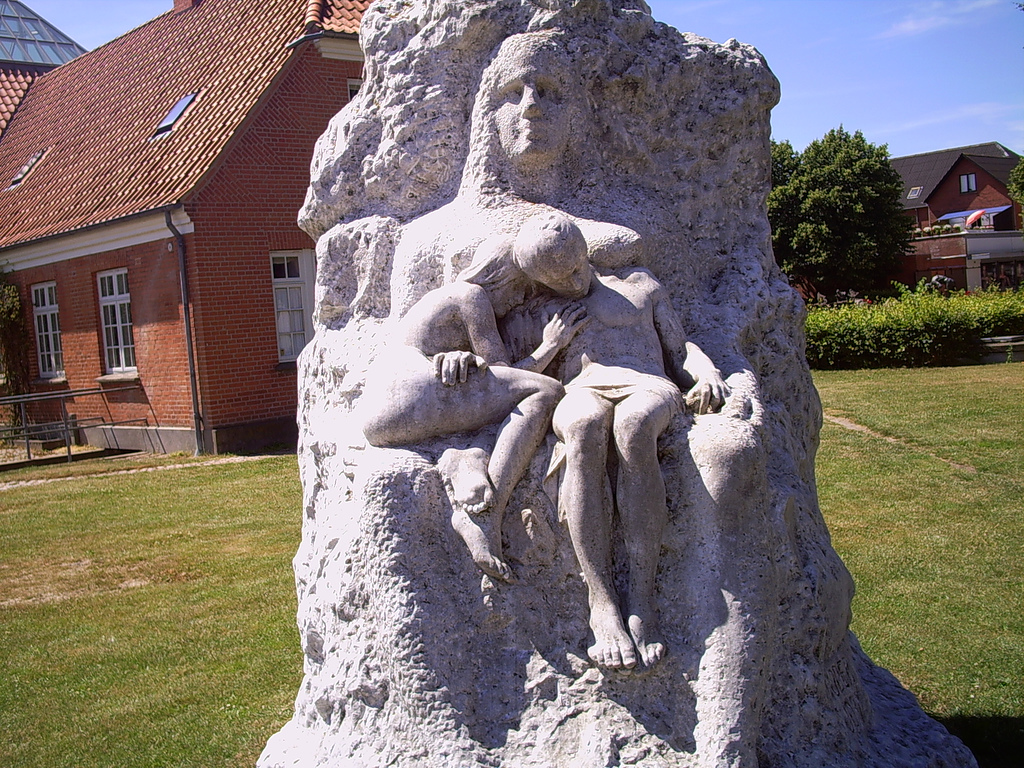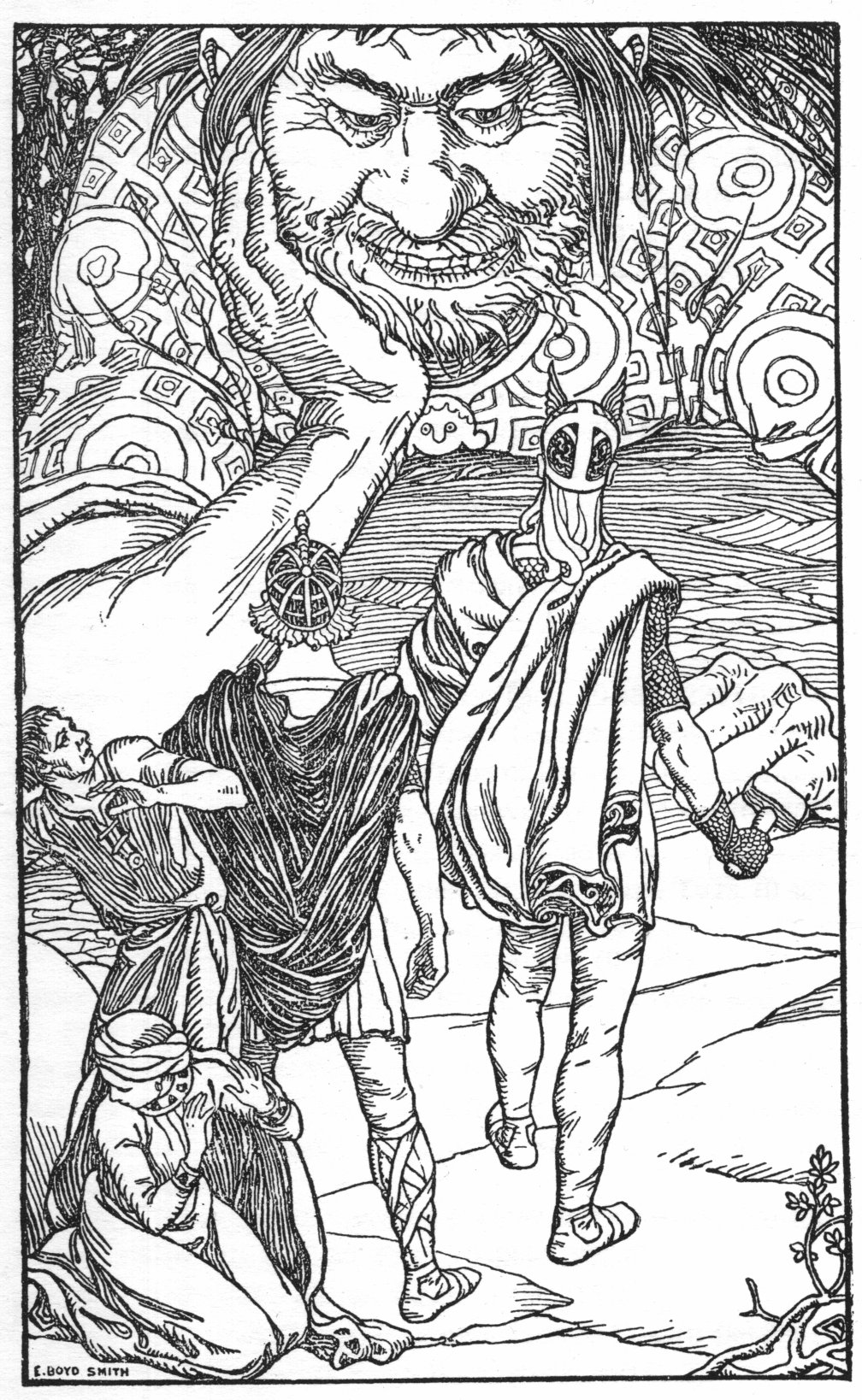|
Geirröðr Hrauðungsson
Geirröðr (also Geirröd) is a jötunn in Norse mythology. He is the father of the Gjálp and Greip, who are killed by the thunder-god Thor. Geirröðr is mentioned in the skaldic poem ''Þórsdrápa'', written by Eilíf Godrúnarson (late 10th c. AD), itself cited in ''Skáldskaparmál'' (early 13th c.) where it is preceded by Snorri Sturluson's account of the myth, and in ''Gesta Danorum'' by Saxo Grammaticus (early 13th c.). Saturn's moon Geirrod is named after him. Name The Old Norse name ''Geirröðr'' has been translated as 'spear-reddener'. It stems from the Old Norse masculine noun ''geirr'' ('spear'), ultimately from the Proto-Germanic ''*gaizaz'' ('spear, tip'). An unrelated figure also bears the name ''Geirröðr'' in the eddic poem ''Grímnismál''. Attestations Prose Edda In ''Skáldskaparmál'' (The Language of Poetry; early 13th c.), Loki is flying in Frigg’s hawk coat to Geirrödargardar, the abode of the giant Geirröðr, when he is captured by ... [...More Info...] [...Related Items...] OR: [Wikipedia] [Google] [Baidu] |
Jötunn
A (also jotun; plural ; in the normalised scholarly spelling of Old Norse, ; or, in Old English, , plural ) is a type of being in Germanic mythology. In Norse mythology, are often contrasted with gods (the Æsir and Vanir) and with other non-human figures, such as dwarf (mythology), dwarfs and elf, elves, although the groupings are not always mutually exclusive. The entities included in the category are referred to by several other terms, including , (or ) and if male and or if female. The typically dwell across boundaries from the gods and humans in lands such as . The are frequently attested throughout the Old Norse records, with also featuring in the Old English epic poem ''Beowulf''. The usage of the terms is dynamic, with an overall trend that the beings become portrayed as less impressive and more negative as Christianity becomes more influential over time. Although the term "giant" is sometimes used to gloss the word "" and its apparent synonyms in some transl ... [...More Info...] [...Related Items...] OR: [Wikipedia] [Google] [Baidu] |
Grímnismál
''Grímnismál'' (Old Norse: ; 'The Lay of Grímnir') is one of the mythological poems of the '' Poetic Edda''. It is preserved in the Codex Regius manuscript and the AM 748 I 4to fragment. It is spoken through the voice of ''Grímnir'', one of the many guises of the god Odin. The very name suggests guise, or mask or hood. Through an error, King Geirröth tortured Odin-as-Grímnir, a fatal mistake, since Odin caused him to fall upon his own sword. The poem is written mostly in the ljóðaháttr metre, typical for wisdom verse. Structure and history The work starts out with a lengthy prose section describing the circumstances leading up to Grímnir's monologue. The monologue itself comprises 54 stanzas of poetic verse describing the worlds and Odin's many guises. The third and last part of the poem is also prose, a brief description of Geirröth's demise, his son's ascension, and Odin's disappearance. The prose sections were most likely not part of the original oral versi ... [...More Info...] [...Related Items...] OR: [Wikipedia] [Google] [Baidu] |
Otherworld
In historical Indo-European religion, the concept of an otherworld, also known as an otherside, is reconstructed in comparative mythology. Its name is a calque of ''orbis alius'' (Latin for "other world/side"), a term used by Lucan in his description of the Celtic Otherworld. Comparable religious, mythological or metaphysical concepts, such as a realm of supernatural beings and a realm of the dead, are found in cultures throughout the world.''Gods, goddesses, and mythology'', Volume 11, C. Scott Littleton, Marshall Cavendish, 2005, , . Pp. 1286-1287 Spirits are thought to travel between worlds or layers of existence in such traditions, usually along an axis such as a giant tree, a tent pole, a river, a rope or mountains. Indo-European reconstruction Many Indo-European mythologies show evidence for a belief in some form of "Otherworld". In many cases, such as in Persian, Greek, Germanic, Celtic, Slavic and Indic mythologies, a river had to be crossed to allow entrance to it ... [...More Info...] [...Related Items...] OR: [Wikipedia] [Google] [Baidu] |
John Lindow
John Frederick Lindow (born July 23, 1946) is an American philologist who is Professor Emeritus of Old Norse and Folklore at University of California, Berkeley. He is a well known authority on Old Norse religion and literature. Biography John Lindow was born in Washington, D.C., on July 23, 1946, the son of Wesley Lindow and Eleanor Niemetta. His father was a banker and his mother was a teacher. John Lindow received his undergraduate degree at Harvard University, where he gained an A.B., ''magna cum laude'', in 1968, and a PhD in 1972, both in Germanic Languages and Literatures. After gaining his Ph.D, Lindow joined the faculty at University of California, Berkeley, serving as Acting Assistant Professor (1972–1974), Assistant Professor (1974–1977), Associate Professor (1977–1983), and Professor of Scandinavian (1983-?). He was since retired as Professor Emeritus of Old Norse and Folklore. In 1977, Lindow was elected as a corresponding member of the Royal Gustavus Ado ... [...More Info...] [...Related Items...] OR: [Wikipedia] [Google] [Baidu] |
Þorsteins þáttr Bæjarmagns
''Þorsteins þáttr bæjarmagns'' or ''The Story of Thorsteinn House-Power'' is a short legendary saga or þáttr. It is a reworking of many of Thor Thor (from ) is a prominent list of thunder gods, god in Germanic paganism. In Norse mythology, he is a hammer-wielding æsir, god associated with lightning, thunder, storms, sacred trees and groves in Germanic paganism and mythology, sacred g ...'s adventures, where Thorsteinn takes the place of Thor. Editions and translationsHerman Palson and Paul Edwards translation from Seven Viking Romances at Jörmungrund. [...More Info...] [...Related Items...] OR: [Wikipedia] [Google] [Baidu] |
Ingot
An ingot is a piece of relatively pure material, usually metal, that is Casting, cast into a shape suitable for further processing. In steelmaking, it is the first step among semi-finished casting products. Ingots usually require a second procedure of shaping, such as cold/hot working, cutting, or milling to produce a useful final product. Non-metallic and semiconductor materials prepared in bulk form may also be referred to as ingots, particularly when cast by mold based methods. Precious metal ingots can be used as currency (with or without being processed into other shapes), or as a currency reserve, as with gold bars. Types Ingots are generally made of metal, either pure or alloy, heated past its melting point and cast into a bar or block using a mold chill method. A special case are polycrystalline or single crystal ingots made by pulling from a molten melt. Single crystal Single crystal ingots (called boule (crystal), boules) of materials are grown (crystal growth) using ... [...More Info...] [...Related Items...] OR: [Wikipedia] [Google] [Baidu] |
Jörð
Jörð (), also named Fjorgyn or Hlodyn, is the personification of earth and a goddess in Norse mythology. She is the mother of the thunder god Thor and a sexual partner of Odin. Jörð is attested in Danish history , composed in the 12th century by Danish historian Saxo Grammaticus; the ''Poetic Edda'', compiled in the 13th century by an unknown individual or individuals; and the ''Prose Edda'', also composed in the 13th century. Her name is often employed in skaldic poetry and kennings as a poetic term for land or earth. Name Etymology Old Norse means 'earth, land', serving both as a common noun ('earth') and as a theonymic incarnation of the noun ('Earth-goddess'). It stems from Proto-Germanic ''*erþō''- ('earth, soil, land'), as evidenced by the Gothic , Old English , Old Saxon , or Old High German (OHG) . The Ancient Greek word (; 'earth') is also possibly related. The word is most likely cognate with Proto-Germanic ''*erwa'' or ''erwōn-'', meaning 'sand, soil' (cf ... [...More Info...] [...Related Items...] OR: [Wikipedia] [Google] [Baidu] |
Gríðr
Gríðr (Old Norse: ) often anglicized as Gríd, is a jötunn in Norse mythology. She is the mother of Víðarr the silent and the consort of Odin. Saturn's moon Gridr was named after her. Name The poetic Old Norse name ''Gríðr'' has been translated as "vehemence, violence, or impetuosity". Its etymology is unclear. Attestations Prose Edda In ''Skáldskaparmál'' (The Language of Poetry), Gríðr is portrayed as equipping the thunder god Thor with her belt of strength, her iron glove, and her staff ''Gríðarvöl'' (Gríðr's-staff) on Thor's journey to the abode of Geirröðr. Gríðr is also mentioned in a list of troll-wives ("I shall list the names of troll-wives. Grid and Gnissa, Gryla..."). Skaldic poetry ''Gríðarvöl'' (Gríðr's staff) is also mentioned in the poem ''Þórsdrápa'' by the late-10th-century skald Eilífr Goðrúnarson. Gríðr appears in 10th-century kennings for 'wolf' (the steed of troll-wife) and for 'axe' (that which is dangerous to ... [...More Info...] [...Related Items...] OR: [Wikipedia] [Google] [Baidu] |
Þjálfi And Röskva
In Norse mythology, Þjálfi (Old Norse: ) and Röskva (O.N.: ), also known as Thjalfi and Roskva, are two siblings, a boy and a girl, respectively, who are servants of the god Thor. Þjálfi receives a single mention in the ''Poetic Edda'', compiled in the 13th century from earlier traditional material, while both Þjálfi and Röskva are attested in the ''Prose Edda'', written in the 13th century by Snorri Sturluson and in poetry of skalds. In the ''Poetic Edda'', Thor recounts an incident where Þjálfi is chased away by she-wolves but gives no additional information about him. In the ''Prose Edda'', Þjálfi and Röskva are the children of peasant farmers. Thor and Loki stay a night at their farmstead and there Thor shares with the family the meat of his goats, Tanngrisnir and Tanngnjóstr, which he can resurrect provided that their bones are intact. Þjálfi sucks the bone marrow, marrow from a leg bone from one of the goats. When Thor resurrects the goats the next morning, ... [...More Info...] [...Related Items...] OR: [Wikipedia] [Google] [Baidu] |
Mjölnir
Mjölnir ( , ; from Old Norse ''Mjǫllnir'' ) is the hammer of the thunder god Thor in Norse mythology, used both as a devastating weapon and as a divine instrument to provide blessings. The hammer is attested in numerous sources, including the 11th century runic Kvinneby amulet, the ''Poetic Edda'', a collection of eddic poetry compiled in the 13th century, and the ''Prose Edda'', a collection of prose and poetry compiled in the 13th century. The hammer was commonly worn as a pendant during the Viking Age in the Scandinavian cultural sphere, and Thor and his hammer occur depicted on a variety of objects from the archaeological record. Today the symbol appears in a wide variety of media and is again worn as a pendant by various groups, including adherents of modern Heathenry (new religious movement), Heathenry. Etymology The etymology of the hammer's name, ''Mjǫllnir'', is disputed among historical linguistics, historical linguists. Old Norse ''Mjǫllnir'' developed from Prot ... [...More Info...] [...Related Items...] OR: [Wikipedia] [Google] [Baidu] |
Megingjörð
In Norse mythology, the megingjörð ( , meaning "power-belt"Orchard (1997:110)) is a belt worn by the god Thor. The Old Norse name megin means power or strength, and gjörð means belt. According to the ''Prose Edda'', the belt is one of Thor's three main possessions, along with the hammer Mjölnir and the iron gloves Járngreipr. When worn, the belt is described as doubling Thor's already prodigious strength. In verse 7 of the skaldic poem Þórsdrápa (Thorsdrapa, Lay of Thor) written by the 10th-century poet Eilífr Goðrúnarson, in the service of Jarl Hákon Sigurðarson, refers to Thor's power-belt. Harðvaxnar sér herðir halllands of sik falla (gatat maðr) njótr (hin neytri) njarð- (ráð fyrir sér) gjarðar. Þverrir lætr nema þyrri Þorns barna sér Mǫrnar snerriblóð til svíra salþaks megin vaxa. The line "njótr njarðgjarðar" literally means "he who benefits from the mighty belt", referring to Thor's magical belt/girdle of strength/power, Megingjör ... [...More Info...] [...Related Items...] OR: [Wikipedia] [Google] [Baidu] |
Feather Cloak
Feather cloaks have been used by several cultures. It constituted noble and royal attire in and other Polynesian regions. It is a mythical bird-skin object that imparts power of flight upon the Gods in mythology and legend, including the account. In medieval Ireland, the chief poet ( filí or ollam) was entitled to wear a feather cloak. The feather robe or cloak (Chinese: ''yuyi''; Japanese: ''hagoromo''; ) was considered the clothing of the Immortals ('' xian''; ), and features in swan maiden tale types where a ''tennyo'' ( "heavenly woman") robbed of her clothing or "feather robe" and becomes bound to live on mortal earth. However, the so-called "feather robe" of the Chinese and Japanese celestial woman came to be regarded as silk clothing or scarves around the shoulder in subsequent literature and iconography. Hawaii Elaborate feather cloaks called were created by early Hawaiians, and usually reserved for the use of high chiefs and '' aliʻi'' ( royalty). The scarl ... [...More Info...] [...Related Items...] OR: [Wikipedia] [Google] [Baidu] |





